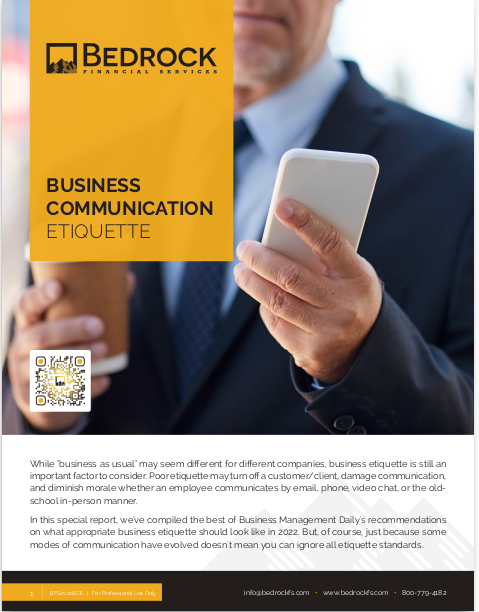Key Takeaways
-
The frequency of your follow-ups isn’t the problem—how you structure them is.
-
Adapting your message tone, timing, and method is essential to prevent leads from tuning you out.
Why the Follow-Up Feels Like a Grind
As an independent insurance agent, you’re told that follow-up is everything. And you’ve taken that advice to heart. You’re calling. You’re texting. You’re emailing. And still, silence.
It’s easy to assume the issue is over-contacting. That you’re overwhelming leads. But in reality, you’re probably not following up too much—you’re just doing it the wrong way. The problem isn’t volume. It’s intent, clarity, timing, and delivery.
Let’s break down what’s going wrong and how to fix it, starting today.
The Follow-Up Timeline You Should Be Using
A scattered follow-up schedule leads to scattered results. You need a rhythm. A well-structured timeline ensures you stay top-of-mind without feeling pushy.
Here’s a sample 30-day follow-up schedule that works:
-
Day 0 (Initial Contact) – First call or meeting.
-
Day 1 – Personalized text or email recap of your conversation.
-
Day 3 – Share a piece of educational content.
-
Day 6 – Ask a short question that prompts engagement.
-
Day 10 – Leave a voice message with a soft reminder.
-
Day 14 – Email highlighting a common concern you can solve.
-
Day 18 – Share a brief client story or statistic.
-
Day 22 – Ask if the timing is off and when it might be better.
-
Day 26 – Restate your value proposition and how it saves them time or money.
-
Day 30 – Send a final message letting them know you’re closing the file for now (but welcome future outreach).
This structure balances persistence with respect.
The Psychology Behind Ignored Follow-Ups
In 2025, digital fatigue is real. Your leads are bombarded with marketing messages—especially in the insurance space.
To get through that fog, your follow-up needs to feel personal, not promotional.
Common missteps include:
-
Sending the same message repeatedly.
-
Using generic or sales-heavy language.
-
Following up with no added value.
-
Contacting leads without context or continuity.
If your follow-up feels like a nudge to buy, your leads will retreat. But if it feels like support or insight, they’re more likely to stay engaged.
Matching the Message to the Moment
Timing is everything, but tone is what determines whether your message lands.
You should be asking yourself:
-
Is this follow-up about me or about them?
-
Am I adding anything new with this message?
-
Would I respond to this if I received it?
Match your message to where the lead is:
-
Unresponsive after a quote? Send a comparison of typical plan features with easy-to-read bullet points.
-
Ghosted after a good call? Ask a low-pressure question like, “Did anything change on your end?”
-
Stuck in indecision? Share a simple visual breakdown of the options discussed.
Varying Your Delivery Channels
In 2025, your prospects are multi-platform. If all your follow-ups live in email, you’re likely being ignored.
Spread your touchpoints across different mediums:
-
Text Messages – Great for short, quick reminders.
-
Voicemail Drops – More personal and harder to ignore.
-
Email – Ideal for deeper content and educational material.
-
Social Media DMs – Effective if the relationship already has context.
You don’t need to use every channel every time. Rotate them based on the message type and the lead’s preferred method of communication (if known).
Lead Status Should Shape Your Approach
Different leads need different strategies. A one-size-fits-all follow-up is a fast track to the delete button.
Segment your leads by status:
-
Hot Leads – You can follow up every 2–3 days for the first week, then ease into every 5–7 days.
-
Warm Leads – Weekly touchpoints work best. Focus on education and consistency.
-
Cold Leads – Biweekly or monthly check-ins. Share industry insights or regulatory changes.
The colder the lead, the more you should shift from selling to educating.
What to Say When You’re Out of Things to Say
Running out of new material is common. But repeating the same call-to-action won’t move the needle.
Instead, try:
-
Highlighting a new industry trend or policy shift.
-
Asking an opinion-based question: “How do you feel about ____?”
-
Offering a short checklist of what to consider before making a decision.
-
Sharing a limited-time event (without sounding promotional).
The key is relevance. Each message should feel like it was sent for them, not from an automation tool.
How Long to Keep Following Up
This is one of the most misunderstood parts of the follow-up process.
Persistence doesn’t mean endless messages. But it does mean giving your leads enough chances to respond, especially if you caught them at a bad time initially.
General duration guide:
-
Hot Leads – Follow up actively for 30–45 days.
-
Warm Leads – Stay in touch for up to 60 days, then move them to a long-term nurture list.
-
Cold Leads – Check in quarterly or when something relevant changes.
Your goal is to balance efficiency with humanity. Always offer a respectful “out” in your final follow-up. Something like, “If now isn’t the right time, I completely understand. I’m here if things shift.”
Automation Isn’t the Enemy—Bad Automation Is
You may be using automated tools to stay consistent. That’s smart—but only if your automation feels human.
Avoid:
-
Over-templated messages.
-
Robotic subject lines.
-
Scheduling too many messages too close together.
Do:
-
Add first names and relevant details.
-
Space out messages to match human rhythms.
-
Use automation to enhance real relationships, not replace them.
Your automation should be your assistant, not your stand-in.
How to Make Follow-Up Feel Like Service
When your follow-up feels like help—not pressure—you’ll stand out.
Reframe your intent:
-
Don’t check in “to see if they’re ready.”
-
Check in “to make sure they have what they need to decide.”
-
Don’t push “why you’re the best.”
-
Show them “why the timing matters.”
This kind of shift in tone increases response rates without increasing volume. It positions you as a partner, not a salesperson.
What You Can Start Doing Today
If you’re ready to transform your follow-up strategy, start with these action items:
-
Audit your last 10 follow-ups. Would you reply?
-
Set up a 30-day follow-up timeline and assign message types.
-
Identify lead segments and label them: hot, warm, cold.
-
Choose 2–3 platforms for varied outreach.
-
Rewrite your most-used follow-up message with the phrase: “Here’s what might help.”
These steps alone will shift your perception—and your results.
Following Up the Right Way Gets You Back in Control
When you shift your follow-up from pressure to presence, you become the kind of agent people want to work with—even if the timing isn’t right today.
Your persistence matters, but it has to be intentional, respectful, and relevant.
If you’re looking to sharpen every part of your client communication—while getting access to exclusive lead tools, automation platforms, and professional branding support—sign up with Bedrock Financial Services.
We help independent agents like you do more than follow up. We help you get follow-through.







